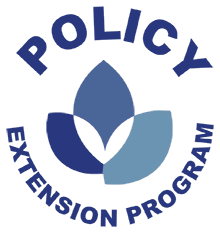A variety of pollution control programs have been implemented by the U.S. Environmental Protection Agency under the Clean Water Act. The Clean Water Act regulates both point sources and non-‐point sources of water pollutants. A point source pollutant is identified to a localized source such as industry or a sewage treatment plant, while a non-‐point source pollutant is not from one specific location but rather occurs as a result of runoff typically coming from a variety of sources.

- Priority pollutants -‐ various toxic pollutants such as heavy metals or organic compounds
- Conventional pollutants – any pollutant that is amenable to treatment by a municipal sewage treatment plant. Examples include fecal coliform, oil and grease.
- Non-‐conventional pollutants -‐ any pollutant not identified as either conventional or priority. Examples include chlorine, ammonia, nitrogen, and phosphorus
For more detailed information about the Clean Water Act please visit: http://www.epa.gov/agriculture/lcwa.html
“Clean water is not an expenditure of Federal funds; clean water is an
investment in the future of our country.”Bud Shuster, U.S. Representative
Conversations to have:
Producers and agricultural business owners should be aware of how Clean Water Act associated programs may influence their business. Information about Clean Water Act associated policies and regulations, local water quality standards, limitations on use of water bodies, and standards related to nutrient and waste management should be identified while making business management strategy decisions. Alternative farming practices recommended by research universities and the government should be taken into consideration to enhance the sustainability of water resources.
The general public needs to understand the importance of the Clean Water Act and how the Clean Water Act influences their life. They should be aware of the quantity of fertilizers and pesticides they use for landscaping, as well as the ramifications of fertilizer and pesticide run off, and proper pet waste removal. The best management practices suggested in programs associated with the Clean Water Act are approaches that can be applied to properly manage water, fertilizer, and pesticide that can result in the improvement of our water resources.
Decision makers need to know about the local water quality standards required by the Clean Water Act in their area and be aware of any changes in water quality standards promulgated by the Environmental Protection Agency. They should understand current regulations related to water pollutant management, what science can tell us about water quality, and be aware of public opinion related to water issues which provide a broad snapshot of understanding on a complex topic. By understanding both regulatory and scientific facts, as well as public opinions, decision makers will be equipped to take educated action on public policy development.
Important Items
Sources of pollutants: Pollutants impacting water quality include pathogens, nutrients, sediment, and metals. Currently, the major pollutants found in Florida are nutrients, such as nitrogen and phosphorus, through leaching and runoff.
The Clean Water Act is the foundation of other programs: Clean Water Act-‐derived programs include the:
- National Pollution Discharge Elimination System program
- Pretreatment programs
- Biosolids programs
- National Estuary Program
- National Coastal Water Program
- Oil Spill Prevention, Control, and Countermeasures Program
- Total Maximum Daily Loads
Impacts to the environment: Nutrient pollutants can lead to algae blooms in water bodies, including streams, lakes, and others. They can be harmful to humans, wildlife, and tourism.
Best Management Practices: BMPs are the most effective, practical means of preventing or reducing pollution from nonpoint sources.
Water quality monitoring: Since water quality decrease can be influenced by seasonal climate and human activities, water quality should be monitored continuously to ensure water use safety.

